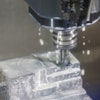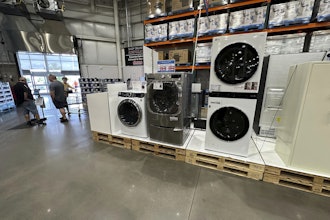In glancing through this year’s Big 50 list, which was published in our September/October issue, there are a couple of major themes. The first is, of course, the economy and the effect of the horrible weather earlier this year, which caused many distributors to scale back their optimistic numbers for the year. The good news, however, is we are seeing some glimmers of hope that projects that were put off in the first quarter are now taking place.
Consolidation: The Big Picture
A continuing and growing theme is that we are also seeing many of these larger distributors going beyond their traditional core product base, targeting for acquisition small and mid-size distributors that carry complementary product lines. Many of these larger distributors are looking to become a “one stop” supplier for their customers.
This is far different from M&A activities years ago, when a cutting tool distributor, for example, would simply buy a competitor that carried similar products or complementary product lines.
M&A activity, to no one’s surprise, is growing at a rapid rate. Activity had slowed in recent years, but it has come back with a flourish, surpassing the boom times for such activity. In fact, last year there were some major deals including MSC buying Barnes Distribution North America for $550 million.
With valuations at high levels, many distributors are looking to sell. In fact, 25 percent of industrial distributors said they would be agreeable to a buy-out, according to ID’s Annual Survey of Distributor Operations. That is much higher than in previous years. The survey also showed that a third of the responding distributors are looking to make an acquisition.
When it comes to the Big 50 distributors, we see that many of them are making acquisitions in order to take market share from smaller distributors.
David Little, CEO of DXP Enterprises, clearly summed up what many larger distributors are saying during a recent interview with ID: “We either want smaller distributors to sign up, or we want to take market share from them,” he said. “We are not targeting other big players in the industry, but trying to grow incrementally in a different way.”
Although many acquisitions have involved smaller distributors, there was one major transaction concerning the Big 50 just a few months ago when Sonepar announced it was acquiring the Industrial Distribution Group (IDG), a company well-known for its integrated supply expertise. Sonepar, a major global electrical distributor, also acquired Hagemeyer North America several years ago. It is further evidence that some specialized distributors in other product areas have expanded into the MRO area.
Growth by Segment: Safety and More
Some of the Big 50 distributors seemingly have identified the safety area as a path for growth.
Wesco, for example, considered to be the largest electrical distributor in the country, has greatly expanded into the MRO/safety areas. Two years ago, Wesco bought Conney Safety, a move that is already paying major dividends. In fact, the company has added some 35 salespeople to Conney Safety since. And Wesco made more inroads into the safety arena with its more recent purchase of Hazmasters, one of the largest safety distributors in Canada. Many even had speculated that Wesco could have been the possible acquirer of IDG, an acquisition that would’ve been a successful extension of its integrated supply management program.
Wesco has indicated in recent meetings with analysts that it will continue to look for acquisitions in its core electrical business as well as possibly acquiring more MRO/safety
distributors.
Grainger has acquired several companies in the past few years, including the purchase last December of Safety Solutions Inc., a Dublin, OH-based distributor of safety footwear, supplies, and services with a strong focus on the manufacturing sector. In 2012, Safety Solutions Inc. had sales of $63 million.
The interest in adding safety products to existing lines has also been a trend for some years.
Several years ago, Industrial Distribution asked readers to identify the product lines they would be adding. Safety and janitorial supplies finished as the top two product categories.
Since then, there have been hundreds of acquisitions in the safety business, according to some reports.
Airgas is one of the largest gases and welding equipment companies in the world. But it also has a safety division, which has greatly increased its abilities to sell complementary products.
DXP Enterprises, which started in business many years ago as a pump distributor, has added safety products to its existing lines. DXP has been one of the major acquirers in the distribution sector, buying some 18 companies in the past four years. And the company, through acquisition, has broadened its lines to include products such as bearings and other power transmission components.
HD Supply’s facilities maintenance unit, which includes safety supplies and a number of other products such as plumbing, saw that group’s sales grow several percentage points last quarter.
One of HD Supply’s key strategies for growth is similar to what these other distributors are doing: selling more products to existing customers while also continuing to look for additional customers.
Kaman has been successfully following that strategy through several new acquisitions and partnerships in the industrial automation, fluid power, hose, and electrical segments.
What’s Next?
The pace of acquisitions is expected to pick up this year, both among industrial manufacturers and distributors. The executives of several large distributors say they have a pipeline of potential distributors for acquisition.
MSC Chief Executive Officer Erik Gershwind told financial analysts that we are in the early stages of an industry consolidation and that MSC, now that it has successfully integrated BDNA, will be one of the major players in the M&A game. He points out that with its scope, size, and financial capabilities, MSC will continue to grow.
He’s not alone. Grainger CEO Jim Ryan has also said the industry is in an early phase of consolidation.
It will be interesting to see if M&A activity continues to grow as it has the past few years. All indications are that it will.
By the way: if you haven’t checked out our Big 50 video, it can be found on our website at: www.inddist.com/2014Big50
Jack Keough is contributing editor of Industrial Distribution. He can be reached at [email protected].























